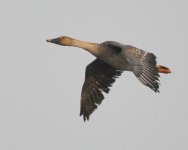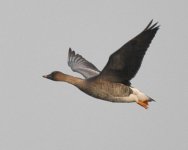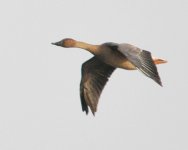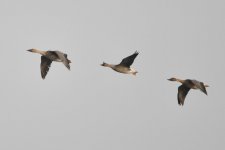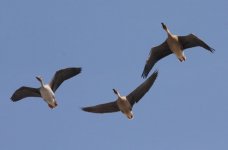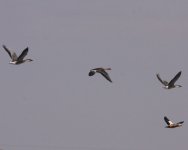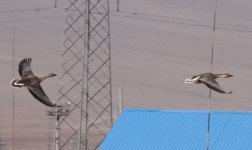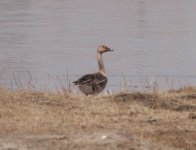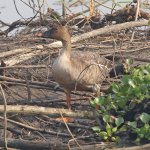Richard Klim
-------------------------
Sorry Niels, my summary in post #3 was rather brief.A couple of questions:
the subspecies johanseni which is mentioned in Clements seems to have been subsumed into one of the other forms, but which? (fabilis or middendorfii)?
What are some field marks for the Middledorf's goose? The large bill has been mentioned, but how else does it differ?
Dan Brown suggests: "the name 'johanseni' could be usefully retained to describe those individuals that may originate from the contact zone between A. fabalis and A. middendorffii and that are not easily assigned to either of these two taiga-breeding species".
And wrt Middendorff's Bean Goose: "It is a very large, well-proportioned goose, larger than fabalis, with a long but relatively thick-set neck, which typically lacks the snaky appearance that Taiga Bean Goose frequently exhibits: the neck appears long and smoothly curved. The head is large and can appear top-heavy for the bird, and the bill is huge, heavy and dominates the head; as well as being very long, it is noticeably deep-based. In comparison, Taiga Bean Goose sports a far more lightweight bill. The culmen is very long and straight or slightly convex, progressively tapering to a thick, but not bulbous nail. The cutting edge of the upper mandible is strongly curved, this being greatest at the base of the bill. The depth of the lower mandible at the base accounts for approximately 30% of the total bill depth at this point. The lower edge of the lower mandible is convex and seemingly bulges out beneath the bill at the chin. The whole bill accounts for 50% of the total head and bill length."
Also: "... exhibiting a narrow (normally covering 25% of the bill length or less) orange sub-terminal band. ...frequently shows a gingery wash to the plumage unlike any of the other forms. ...shows a distinct preference for wetlands, where it is often seen up-ending in shallow water or delving deep into wet mud for its food."
Richard
Last edited:





